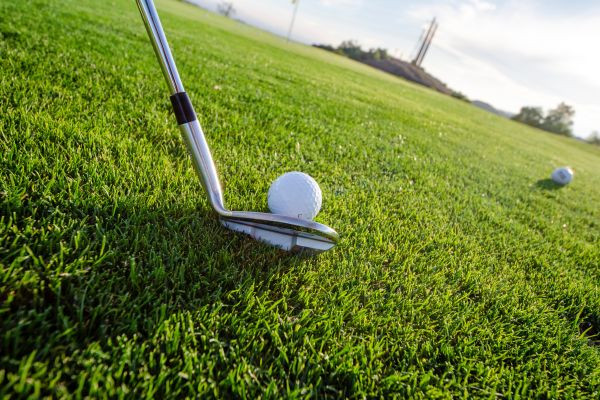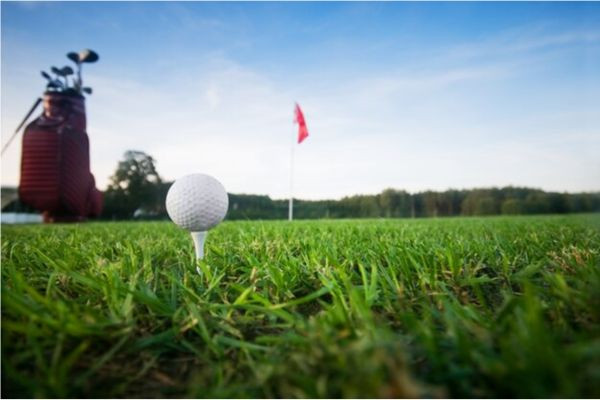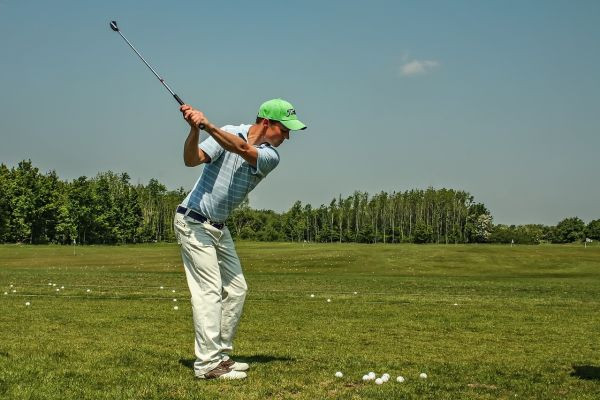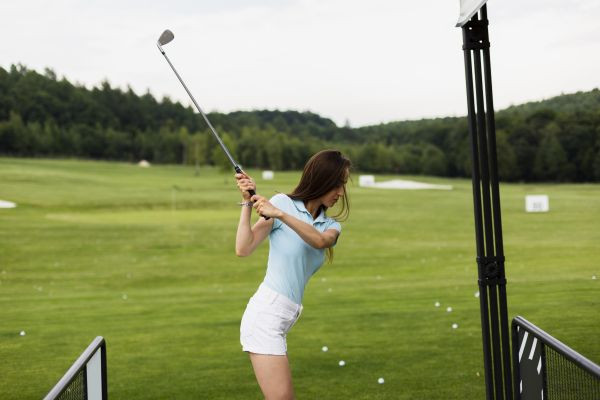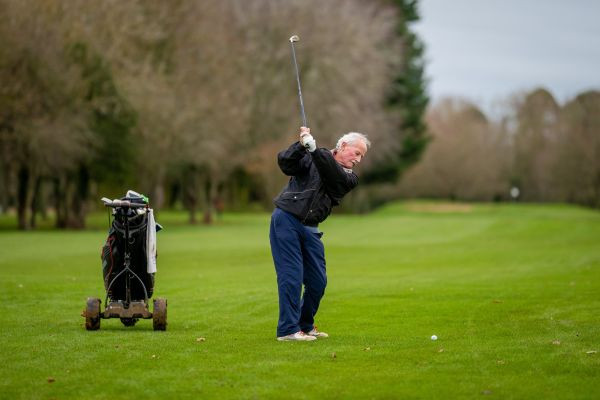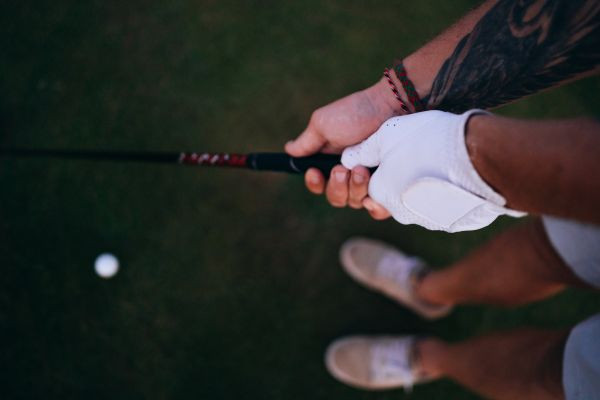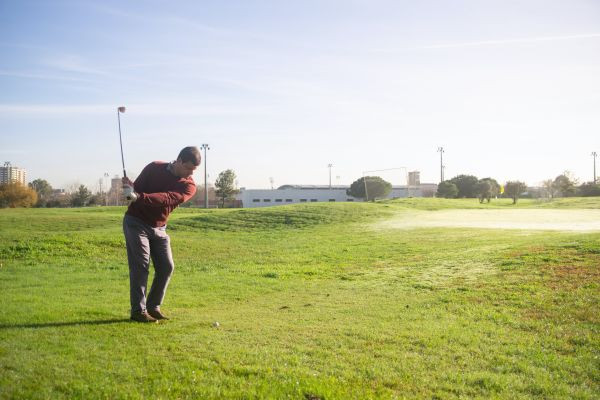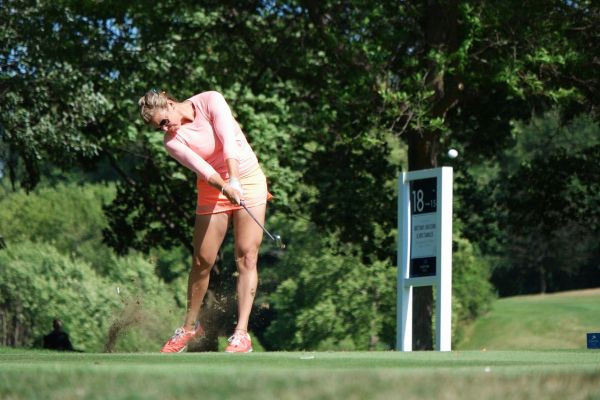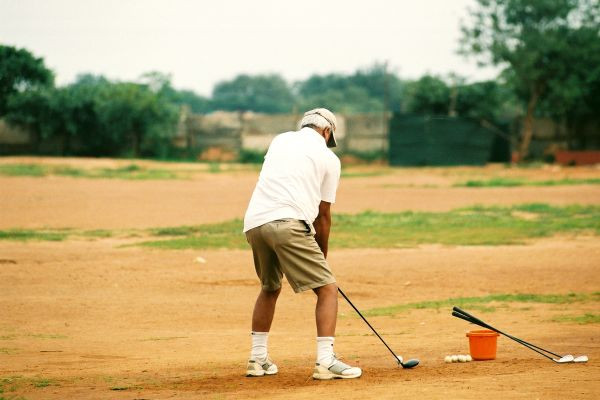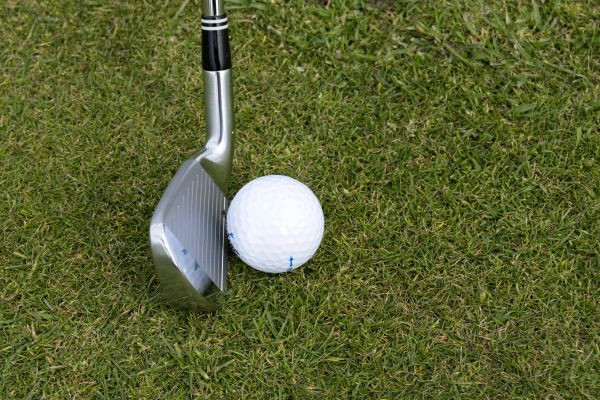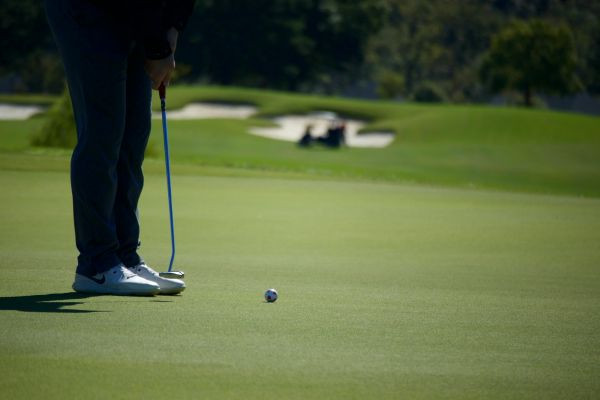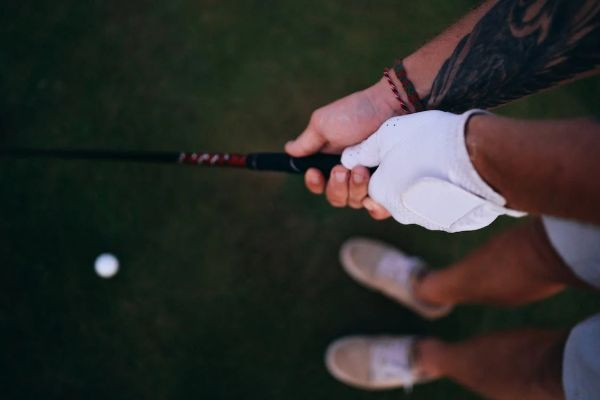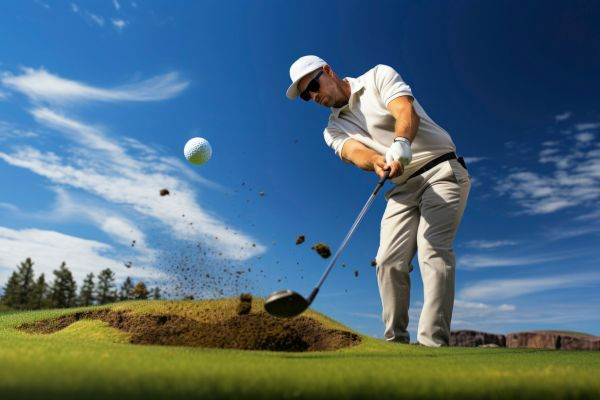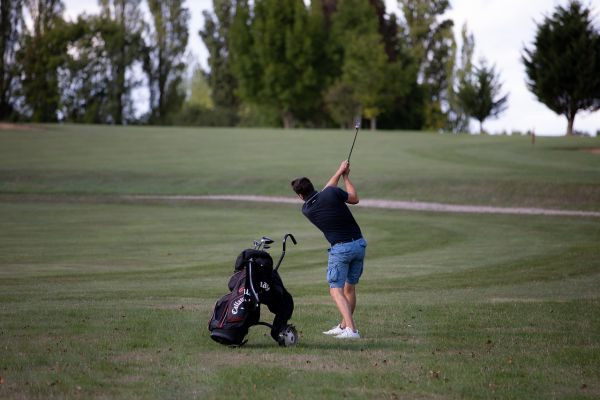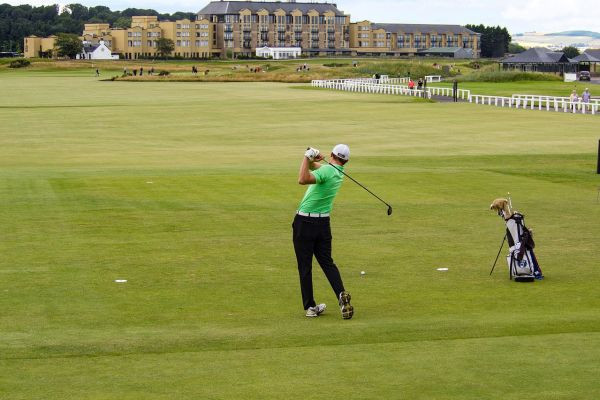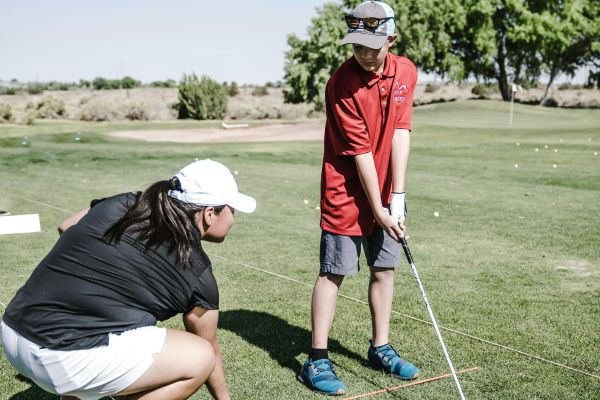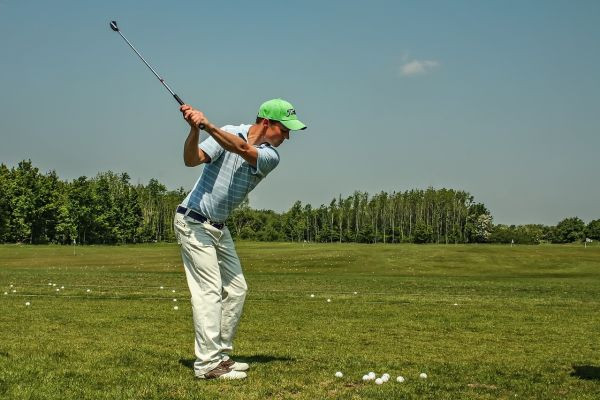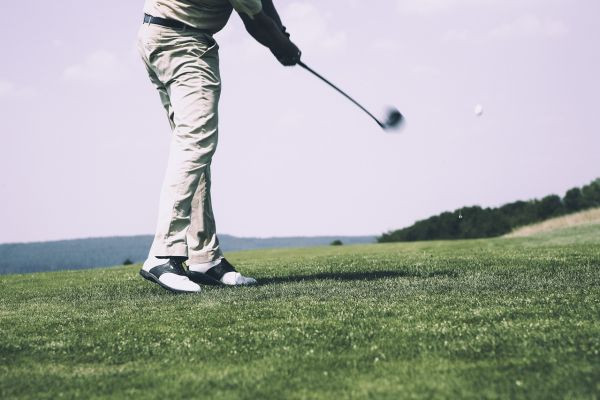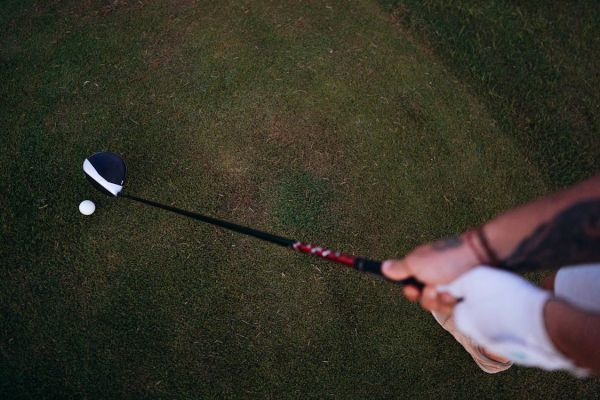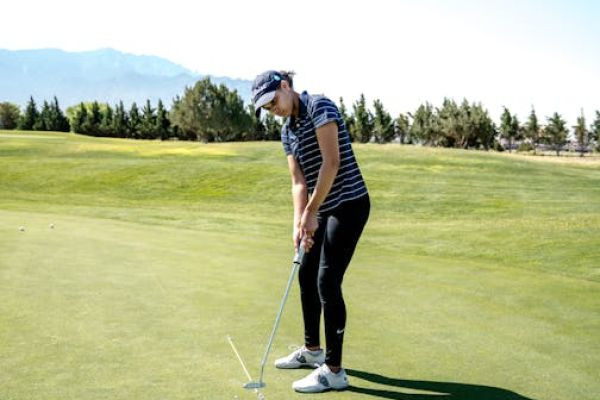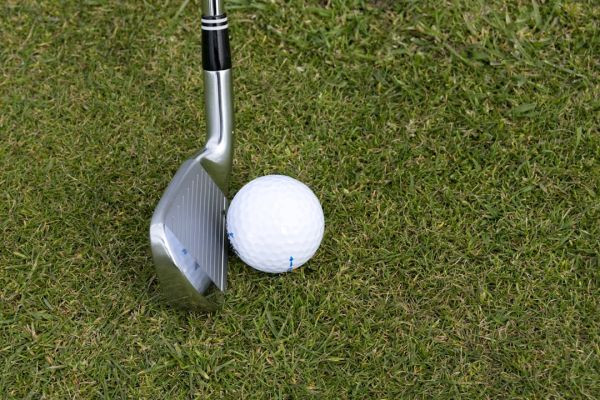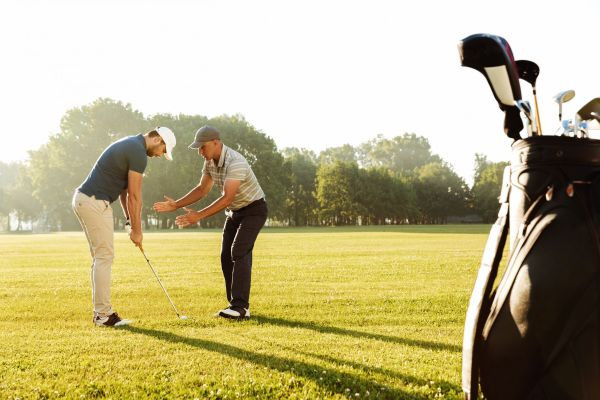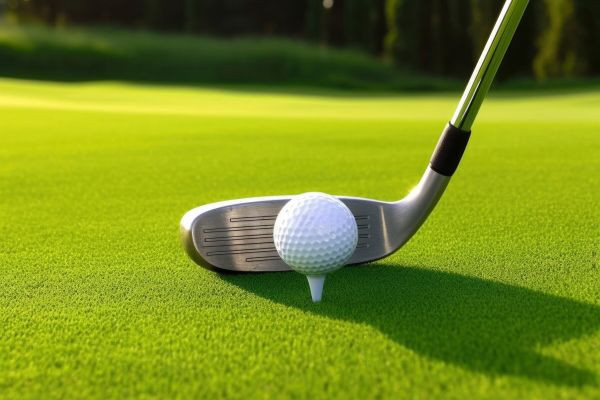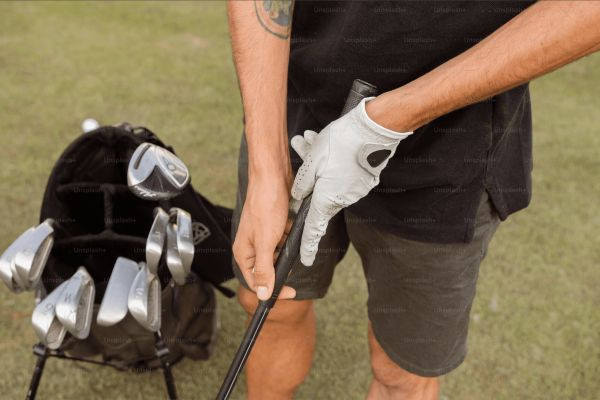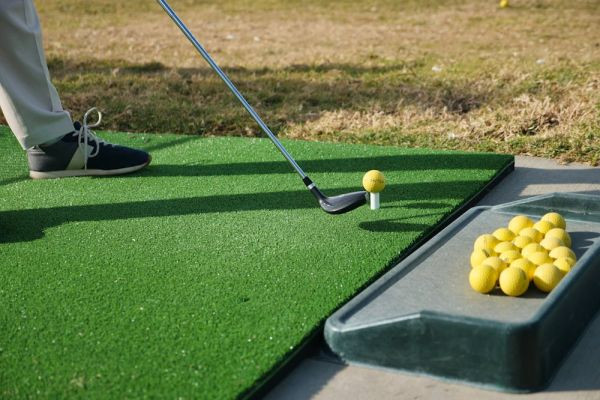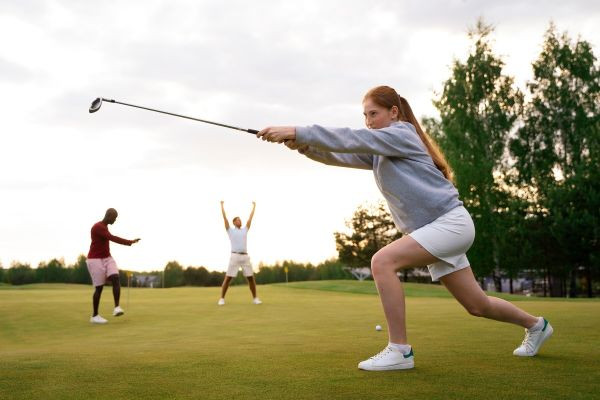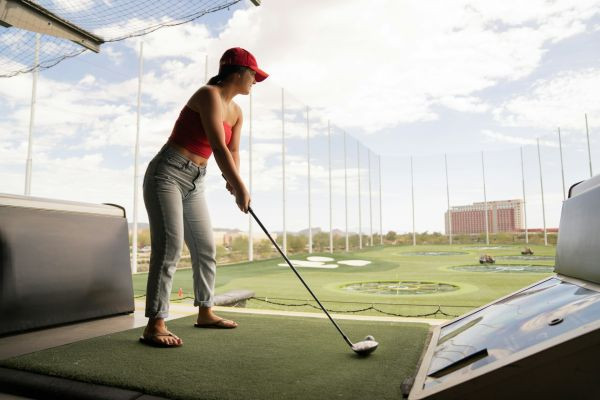Five Strategies for Striking Irons with Precision and Accuracy
Hitting your irons pure and straight is a cornerstone of a solid golf game. Whether you're a seasoned pro or a weekend warrior the quest for consistency and accuracy with your irons is never-ending. T..

Hitting your irons pure and straight is a cornerstone of a solid golf game. Whether you're a seasoned pro or a weekend warrior the quest for consistency and accuracy with your irons is never-ending. Today we're diving deep into five transformative strategies that will elevate your iron play from hit-and-miss to pure precision.
The Basics
It is essential to start with the fundamentals of golf: posture, grip and stance before moving on to more complex iron play techniques. If you neglect these basics it is like constructing a house on unstable ground—no matter how much work is done on the top levels the whole structure is at risk.
Role of Posture
Consider your golf swing just like an impressive symphony and your stance as the director. If the maestro is inexperienced or out of balance the music drops into disarray. Discernibly if your stance isn’t balanced and steady your swing can rapidly become disordered.
The critical factor is to keep a stance that permits your body to move smoothly and efficiently through the ball. This leads to cleaner shots and markedly decreases the potential for injuries. The optimal posture includes a small bend at the hips, a straight back and knees slightly bent. The pose should feel comfortable and active and should be ready to propel the ball with control and accuracy.
Importance of Grip and Stance
Your grip is the sole connection your body has to your club. It must be firm yet natural in order to perform well. If the pressure is too tight this can limit your swing motion and reduce the power you can generate. Conversely if the clubhead is allowed to become independent your control over the club is lost. You must find a pressure that is right for you, one that allows you to hold on and guide the club confidently through the full range of its arc.
While your stance isn't just about where your feet are it's about setting yourself up for success. For most of your irons your feet should be about shoulder-width apart providing a solid base from which to power your swing. Having the ball in the right position relative to your stance is critical when it comes to setting the right launch angle and achieving solid contact.
As a general rule of thumb you should position the ball centrally in your stance for mid-irons. For longer irons adjust it slightly forward and for shorter ones a bit back. A well-executed grip and a thoughtfully positioned stance combined provide the launchpad for every successful iron shot. They're basic, we know but mastering the basics sets the stage for greatness.
Strategy 1: Mastering the Stable Fluid Spine
The concept of the "Stable Fluid Spine" is pivotal in the world of golf for those aiming to elevate their iron game. This technique's essence lies in the preservation of a constant spine angle from the moment you address the ball until the follow-through of your swing. It's about creating a synergy between stability and flexibility ensuring that your spine serves as the unwavering axis around which your swing rotates.
The benefits of adopting this approach are manifold. For starters it significantly enhances the consistency of your ball striking. With a stable spine your body can rotate more efficiently reducing the likelihood of mis-hits. Furthermore this technique fosters a level of accuracy that can transform your game. By maintaining a consistent posture you're better able to predict and control the flight path of the ball allowing you to aim with greater precision.
Practical Tips for Implementation
Incorporating the Stable Fluid Spine into your swing begins at setup. Position yourself with a slight tilt in your spine away from the target. This is more than a mere physical adjustment; it's about setting the stage for a swing that's both powerful and controlled. This initial tilt is not just for show; it plays a critical role in the mechanics of your swing. It encourages a swing path that comes from inside the ball's line setting you up for shots that are both pure and penetrating.
To put this into action visualize a line from the top of your head down through your spine to the ground. When setting up this line should lean away from the target allowing your lower body to lead during the downswing followed by your body. This setup is essential for creating the path needed to strike the ball effectively.
Make it a habit to practice this posture regularly without swinging. Just getting into position. Feeling that tilt can help train your muscles. As you start swinging, concentrate on maintaining that angle. It might feel strange initially. Over time having a Fluid Spine will become second nature in your swing routine leading to more accurate and reliable iron shots.
Strategy 2: Ensuring Proper Weight Distribution
When aiming for an accurate iron shot it's crucial to have control over how your weight is distributed during the swing. This aspect plays a role in determining not only the path of your swing but also the precise moment when your club connects with the ball. By ensuring weight distribution and smoothly transitioning from the back foot to the front foot in sync with your swing you create a fluid motion that improves both the power and precision of your shot.
The process of shifting weight is similar to a pendulum's movement – deliberate and well balanced. In golf this technique guarantees that the energy produced by your swing is effectively transferred to the ball maximizing both distance and accuracy. Mastering weight distribution tunes your swing to capitalize on your body's capabilities ultimately optimizing how the ball travels and where it lands.
Drills for Weight Distribution
Improving your swing through weight distribution can be honed through drills. One fundamental exercise focuses on transferring your weight from foot to front foot as you execute each swing.
Make sure your movement is smooth and flowing matching the rhythm of your swing to maintain a transfer of power.
An effective drill to try is the "step through" exercise, which aims to develop a shift in weight. Begin by assuming your stance and starting your backswing. As you begin the downswing take a step with your foot bringing it next to your front foot. This exaggerated step helps reinforce the feeling of transferring weight during the swing ingraining this movement into muscle memory.
Another useful drill is the "two ball" exercise. Place two balls on the ground in line with each other spaced about a foot along the target line. Address the ball as usual. Focus on shifting your weight so that you naturally move forward to hit the second ball during your swing. This drill not only improves weight distribution but also promotes forward movement, essential for strong and accurate iron shots.
Regular practice of these drills can greatly improve your performance with irons. The objective is to integrate the weight transfer into your swing ensuring that each iron shot is delivered with the power and accuracy possible. Like any adjustment in your golf swing, patience and perseverance are essential. Over time mastering weight distribution will become instinctive, enhancing your performance to levels.
Strategy 3: Generating Optimal Lag

source:https://pixabay.com/photos/golf-ball-golf-ball-golf-club-881332/
Lag in the golf swing is a concept that has the potential to greatly enhance your game when utilized effectively. It refers to the angle formed between the club shaft and your leading arm, a factor that adds both snap and velocity to your club head as it nears the ball. The key to generating lag involves delaying the club's release, storing energy during the downswing that is unleashed upon impact. This stored energy results in increased power. When executed precisely improved accuracy, in your shots.
The significance of lag cannot be emphasized enough. It's the ingredient that enables golfers to achieve distance with seemingly less exertion. By maximizing lag you're essentially enhancing the efficiency and power of your club enabling it to deliver shots that smoothly head towards the target. Additionally maintaining optimal lag contributes to achieving an impact, on the ball resulting in better control, over its trajectory and where it lands.
Exercises to Increase Lag
Creating and retaining lag can be challenging but with the proper exercises it is achievable. For example an excellent drill highlights the feeling of maintaining the clubhead behind your hands throughout the downswing—whether or not balls are struck. As a result this is an adaptable exercise that can even be carried out at home.
To execute this exercise start in your regular position and begin your swing. Focus on drawing your hands down toward the ball and keeping the clubhead elevated. Picture tugging the club's grip toward the ball and elongating the angle between the club's shaft and your leading forearm as much as possible. The crucial point here is to sense the clubhead's force lingering behind and then snapping through the ball at the final moment.
An additional method for improving lag is the "towel drill.” By tucking a small towel beneath your armpits and securing it in place as you swing you can align your body's movements and reduce unnecessary arm motion that hinders lag in the golf swing. While swinging it's critical to maintain the pressure under your arms for as long as possible during the downswing to bolster the sharpness of the angle between your club and arms which in turn increases lag.
Strategy 4: The Art of the Straight Line Release
The principle behind the Straight Line Release is to improve the precision and consistency of your golf shots. It requires you to do the one thing that no golfer wants to focus on: Release the clubhead down a line that matches your ball target line. While there are more cons than pros to manipulating your clubhead down a simple path if less rotation and less reaction are what you are striving to achieve, the Straight Line Release is a must.
But you must realize that belaboring any of the five key positions and letting the clubhead go at the bottom is important. Otherwise any hope you had of hitting the golf ball straight which by big-scale standards is relatively a given if you effectively deliver the clubhead down the line through the ball's equator is gone.
Perfecting the Straight Line Release has the power to transform your ball striking. Achieving the perfect unity of arms, hands and club head moving as one towards the target creates the pure crisp ball contact and controlled ball flight desired by all golfers.
How to Achieve It in Your Swing
Successfully executing a straight line release requires coordination and repetition. Integrating this essential into your swing is most efficiently achieved with purposeful drills that aim to perfect the necessary fluid motion that presses the ball towards the target.
One of the best features like this involves thinking back to the future and the mantra "extend the club to the target" which repeats the spirit of what we aim to achieve. Through this repetition we stay synced and on task.
Yet another pragmatic approach involves using alignment sticks or a golf club to guide your swing visually. You can put the stick directly on the target line just beyond the ball to make this work. When you swing concentrate on getting the club to follow the stick line for as long as you could after making contact. Not only does this visual support help you keep up with a straight swing path but it also reinforces the sensation of directly releasing the club toward the target.
Making a deliberate effort to ensure the club moves directly toward the target will result in a synchronized movement of the body and arms. This mutual movement is an important part of achieving a successful and purposeful swing. It is important to note that achieving this will not force a straight swing; rather it is necessary to ensure that your movement is directed straight toward the target at the time of impact immediately after to allow for a cleaner and more precise shot.
Strategy 5: Perfecting the Compression Line for Solid Contact
The notion of the compression line in golf can revolutionize the performance of players wanting to upgrade the quality of their ball-striking. It's a line of imagery that has a profound guiding effect on the process of striking the ball in golf.
More than just an imaginary line the compression line shows the optimal way to strike the ball with an iron allowing for the greatest force power and efficiency to be exerted. When we talk about compressing the ball it's all about taking a divot after we hit the ball; so when the clubhead makes contact with the ball we "compress" the ball in such a way that it deforms slightly upon impact before it leaves the ground. The compression is a good sign it's a solid shot.
The compression line serves as a helpful aid for golfers to get a sense of the right path the body and club ought to trace from the backswing to the moment of collision with the ball. It involves positioning the body in such a way as to facilitate excellent ball striking, ensuring that the energy from the swing is maximized.
Techniques for Better Ball Compression
Improving ball compression requires attention to the approach to the setup and mechanics of the swing. One essential element is to concentrate on the preservation of a minor tilt in the upper body as the individual at the same time transfers body weight forward during the execution of the swing. This may seem confusing initially but the emphasis is on establishing a much-needed equilibrium and attaining the correct stance to ensure maximum compression of the golf ball.
This is the way to practice: When you're getting ready for your shot make sure your body is angled slightly away from the target and keep your head behind the ball. As you start to swing down begin the process of transferring your weight to your front foot but maintain that backward tilt with your upper body. Being in this position can make sure that you hit the ball in a descending blow which is essential for good compression and getting the ball to be squeezed between the ground and the club face and that means not much energy wastage.
There is another method that entails concentrating on the hands and ensuring that they lead the clubhead through the impact zone. By keeping the hands in front of the ball at impact a forward lean is created in the club shaft thereby achieving the vital element of proper ball compression. This forward lean increases the loft of the club at impact helping to strike down and through the ball – a fundamental principle for creating solid powerful shots.
Conclusion
In conclusion the precision and accuracy of your shots can be greatly improved by utilizing the five strategic approaches detailed in this guide leading to a more enjoyable golfing experience. The key to achieving these results is through consistent practice and the application of a positive and focused mental approach. By utilizing these strategies effectively you'll soon find that performance on the golf course will become synonymous with the dedication and effort you've put into practice.
Frequently Asked Questions (FAQs)
What's the most common mistake golfers make with their iron play?
A common error occurs when golfers mistakenly believe they can power each shot by lifting the ball rather than relying on the club’s loft and design to lift the ball into the air. The result is poor impact and inconsistency. If golfers understood and placed trust in the design of their irons they could cut out this mistake resulting in a game that’s much more consistent and effective.
How can I measure improvement in my iron shots?
Monitor the regularity of your shots identifying progressions in power precision and the recurrence of effective impacts. Utilize advanced tools if at your disposal such as launch monitors for an accurate real-time analysis of your performance. Charting your evolution consistently over a period can ignite inspiration and offer clarity on the pockets of your game that necessitate adjustment.
Are there specific clubs that help with striking irons more accurately?
Although club equipment may be beneficial, concentrating on technique and rehearsing is crucial. Once you have perfected the fundamentals seek the advice of a club fitter to discover the clubs that will suit your style of swinging. It is important to understand that while no piece of equipment can be a substitute for superior technique, the correct tools can help to improve your innate talents.
What should I focus on if I'm just starting to learn golf?
Start by focusing on the basics: how you hold the club, how you stand, how you position your body. Perfecting these fundamentals sets you up to incorporate the more advanced aspects of the game. As you get better slowly build out the more complex concepts making sure each is grounded in the fundamentals.



